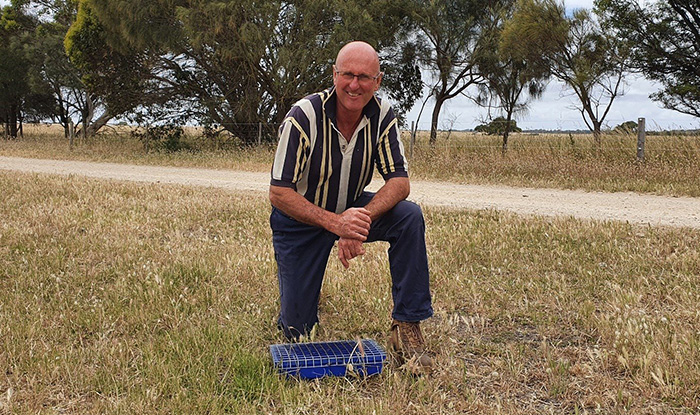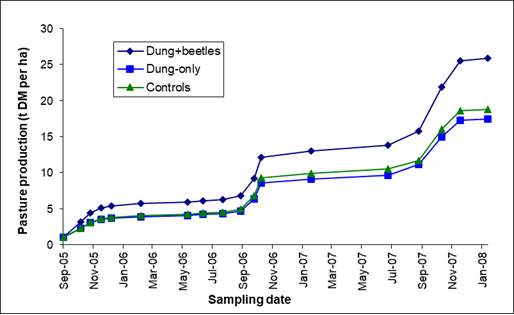 Darryn Simon and a dung beetle trap on 'Woodrise', the property he manages in Beachport, SA.
Darryn Simon and a dung beetle trap on 'Woodrise', the property he manages in Beachport, SA.
SA beef and lamb producer Darryn Simon knew there were dung beetles on the 10,00ha farm he manages, 'Woodrise', but had no idea how many were there or when they were most active.
That's why he became involved in the Dung Beetle Ecosystem Engineers (DBEE) project through the McKillop Farm Management Group.
"As it turns out, we had more active species than we realised," Darryn said.
During the project, four dung beetle traps were set each month in Darryn's paddocks, which were checked after 24 hours. The beetles were then collected and sent off to be identified and counted.
"There were over 100 sites across Australia involved in the research and we were one of them," Darryn said.
"It gave us an assessment of what species we had and their numbers."
Range of species key to boosting beetle benefits
DBEE researcher Dr Bernard Doube said the results from Woodrise showed nine species were present (Table 1).
Table 1. Dung beetle species and abundance at Woodrise, Beachport, SA, from January 2020 to January 2021 as estimated by beetle monitoring (Source: Bernard Doube)
Species |
Number |
Onthophagus taurus |
12,906 |
Aphodius fimetarius |
1,679 |
Euoniticellus fulvus |
1,577 |
Aphodius lividus |
988 |
Onthophagus binodis |
134 |
Bubas bison |
45 |
Onthophagus australis |
37 |
Onitis aygulus |
31 |
Onthophagus mnezschi |
31 |
Euoniticellus pallipes |
0 |
Hister noma |
0 |
Onthophagus pronus |
0 |
Heteronchus arator |
0 |
Different dung beetle species work in different ways and are active at different times of year. To gain the greatest benefits from dung beetles, Dr Doube says a range of species is needed.
"Onthophagus taurus beetles were present in large numbers on Woodrise but there were relatively low levels of Bubas bison.
"Bubas bison, which is a winter active species, will be increasing in number to some extent."
Dr Doube has previously measured the effect of dung beetles on pasture growth (Figure 1).
Figure 1. Effect of dung beetles on pasture growth, Ashourne, SA (Source: Bernard Doube, 2008)

"Dung beetles increase the supply of nutrients into the soil substructure and improve the permeability of the soil," he said.
"We demonstrated that the time it took for pasture to hay off was delayed by up to a month where dung beetles were present, due to increased water holding capacity."
Looking after your beetles
Darryn thinks of the dung beetles on his property as an unpaid workforce, actively building soil structure and fertility.
"The dung beetles are contributing to the fertility of our soil in quite a considerable way," he said.
"They're one of nature's recyclers and are part of our biological grazing system."
Since taking part in the project, Darryn has watched out for the drenches and chemical inputs that may affect the dung beetle populations.
"You want to enhance their numbers, because they do nothing but good for your property," he said.
Dr Doube said the first step in increasing the role of dung beetles in a pasture is to understand the species and numbers present, as Darryn did.
According to Dr Doube, producers are often surprised to find out they have beetles present on their property.
"I ask producers to look during different seasons of the year. When they find a hole in the ground around dung pats, they dig the beetle up and photograph it and send it to me so I can identify it."
He said that once producers understand the species and numbers present, they can begin to modify pasture and livestock management to improve beetle numbers and introduce new species to cover seasonal gaps.






